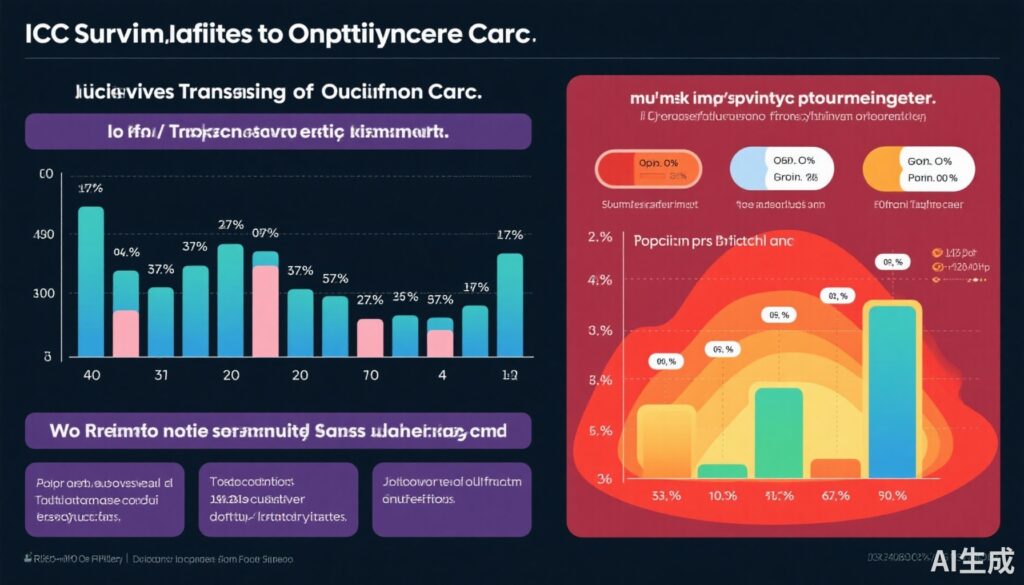Highlights
- Approximately 4.2% of opioid-naïve ICU survivors develop new persistent opioid use within six months post-discharge.
- Early opioid prescription within 30 days of hospital discharge is the strongest predictor of persistence (OR ~20).
- Risk profiles differ by opioid potency: potent opioid use is mainly driven by cancer diagnoses, while less-potent opioid use aligns with demographic and socioeconomic factors.
- Findings underscore the need for early opioid tapering strategies, multimodal analgesia, and tailored stewardship programs for ICU survivors.
Background
The ICU setting typically involves the administration of potent analgesics, primarily opioids, for management of severe and often multifactorial pain. However, critical illness survivors are increasingly recognized as a vulnerable population at risk for long-term sequelae, including persistent opioid use, which may lead to opioid dependence, adverse events, and complicate rehabilitation. Despite growing concern, the epidemiology, risk factors, and opioid potency-specific patterns of new persistent opioid use among opioid-naïve ICU survivors have been incompletely characterized. Understanding these factors is essential for developing risk stratification and targeted interventions to reduce opioid-related harms in this expanding patient cohort.
Key Content
Incidence and Patterns of Persistent Opioid Use Among ICU Survivors
A recent large-scale, retrospective nationwide cohort study from South Korea by Oh and Song (2025) utilized the National Health Insurance Service database, including 567,260 opioid-naïve adults surviving ICU admission between 2020 and 2022. New persistent opioid use—defined by at least one opioid prescription within 90 days post-discharge and an additional prescription between days 91 and 180—occurred in 4.2% (n=23,945) of survivors. This rate reflects a significant public health concern given the scale of ICU survivorship.
The majority (4.0%) used less-potent opioids such as tramadol and dihydrocodeine, whereas only 0.3% used potent opioids including morphine, fentanyl, oxycodone, hydromorphone, and methadone. This differentiation in opioid potency suggests distinct clinical pathways and patient profiles for persistent use.
Predictors of New Persistent Opioid Use
Multivariable logistic regression analysis identified several independent predictors:
- Older age: Incremental increase in risk (OR 1.01 per year; 95% CI 1.01–1.02, P < 0.001).
- Female sex: Elevated odds (OR 1.13; 95% CI 1.09–1.16, P < 0.001).
- Socioeconomic disadvantage: Patients on Medical Aid programs had increased risk (OR 1.30; 95% CI 1.23–1.38, P < 0.001), highlighting social determinants of health.
- Malignancy and metastatic tumor presence: Associated with slightly increased risk (OR 1.05 and 1.24 respectively, both statistically significant).
- Critical illness severity indicators: ECMO treatment conferred the highest risk among clinical factors (OR 1.80; 95% CI 1.75–1.89, P < 0.001), followed by continuous renal replacement therapy (OR 1.24; 95% CI 1.11–1.37, P < 0.001).
- Early post-discharge opioid prescription (within 30 days): The most impactful predictor (OR 19.7; 95% CI 19.1–20.3, P < 0.001), emphasizing the critical period post-discharge for intervention.
The potency-specific analysis revealed that potent opioid persistence was largely driven by cancer-related diagnoses, whereas less-potent opioid persistence bore stronger associations with demographic and socioeconomic variables.
Related Literature
Previous literature corroborates the complexity of opioid use trajectories around critical illness. A population-based cohort study by Wan et al. (2025) demonstrated that prehospital opioid exposure increased the likelihood of sustained opioid availability up to one year post-discharge and correlated with adverse outcomes such as longer hospitalization and higher mortality. This complements Oh and Song’s findings by highlighting the continuum of opioid exposure patterns influenced by prior and post-critical illness factors.
Pain after ICU discharge is a central driver of opioid use. A prospective single-center analysis found that approximately 35% of patients reported chronic pain at one year post-ICU discharge, with axial skeleton fractures and opioid exposure duration during ICU stay identified as significant risk factors (Muller et al., 2025). These data underline the importance of optimizing pain management during and after ICU stay to mitigate persistent opioid use.
Cognitive decline and neuropsychological impairments post-ICU can complicate opioid use and tapering. An observational study employing machine learning identified cognitive phenotypes among mechanically ventilated patients, finding that greater opioid exposure in ICU was associated with worse cognitive outcomes one month post-discharge (Smith et al., 2020). This suggests that opioid prescribing practices during critical illness may influence post-ICU cognitive sequelae, potentially feeding into prolonged dependence.
Expert Commentary
The comprehensive nationwide cohort study by Oh and Song represents a seminal contribution to understanding new persistent opioid use among ICU survivors. The large sample size and robust multivariable modeling provide high-quality epidemiological evidence. The identification of early post-discharge opioid prescribing as the dominant risk factor underscores a pivotal intervention window. Implementing rigorous opioid stewardship programs focused on discharge and early outpatient phases may substantially reduce persistent use.
Distinct risk factors according to opioid potency provide actionable insights. Potent opioid persistence driven by cancer diagnoses reflects appropriate analgesic needs but also calls for judicious management to prevent unintended chronic use. Conversely, socioeconomic disadvantage and demographic factors influencing less-potent opioid persistence demand public health strategies addressing social determinants, including tailored education and access to non-opioid analgesics.
The association of severe ICU therapies such as ECMO and continuous renal replacement therapy with increased opioid persistence aligns with prior knowledge that greater critical illness severity and invasive interventions amplify post-ICU morbidity. Multidisciplinary coordination involving pain specialists, critical care teams, and primary care is necessary to individualize opioid prescribing.
Integrating evidence from pain prevalence and cognitive impairment studies highlights the complexity of post-ICU recovery. Persistent pain syndromes, cognitive decline, and social vulnerabilities create an intertwined pathophysiological and psychosocial milieu conducive to long-term opioid exposure. Future interventions should incorporate multimodal pain management alongside cognitive and psychosocial support.
Current clinical guidelines emphasize minimizing opioid prescribing and adopting multimodal analgesia, yet adherence remains heterogeneous. The present data advocate for structured protocols aiming for early opioid tapering, especially within the first 30 days post-discharge, supported by patient education and monitoring.
Conclusion
New persistent opioid use affects approximately 4% of opioid-naïve ICU survivors within six months post-discharge, posing significant challenges for survivorship care. Early opioid prescription after discharge is the paramount risk factor, and risk profiles vary by opioid potency and patient characteristics.
Tailored stewardship programs emphasizing early tapering, multimodal non-opioid analgesia, and social support are imperative. Integration of pain management, cognitive rehabilitation, and socioeconomic assistance can optimize functional recovery and minimize opioid-related harms.
Further research should explore prospective interventions targeting this critical early post-discharge period and investigate mechanisms underlying opioid dependence in ICU survivors with diverse profiles.
References
- Oh TK, Song IA. New persistent opioid use among ICU survivors after discharge: incidence, predictors, and nationwide cohort analysis. Crit Care. 2025 Nov 3;29(1):469. doi: 10.1186/s13054-025-05716-w. PMID: 41184942; PMCID: PMC12581402.
- Muller G, et al. Prevalence of chronic pain and its risk factors until one year after intensive care unit discharge. Intensive Crit Care Nurs. 2025 Aug;89:103969. doi: 10.1016/j.iccn.2025.103969. PMID: 39951966.
- Wan Y, et al. Patterns and Outcomes of Opioid Use Before and After Hospitalization for Critical Illness: A Population-Based Cohort Study. J Intensive Care Med. 2025 Jan;40(1):85-93. doi: 10.1177/08850666241268473. PMID: 39105427; PMCID: PMC11908688.
- Smith A, et al. Cognitive phenotypes 1 month after ICU discharge in mechanically ventilated patients: a prospective observational cohort study. Crit Care. 2020 Oct 21;24(1):618. doi: 10.1186/s13054-020-03334-2. PMID: 33087171; PMCID: PMC7600536.



